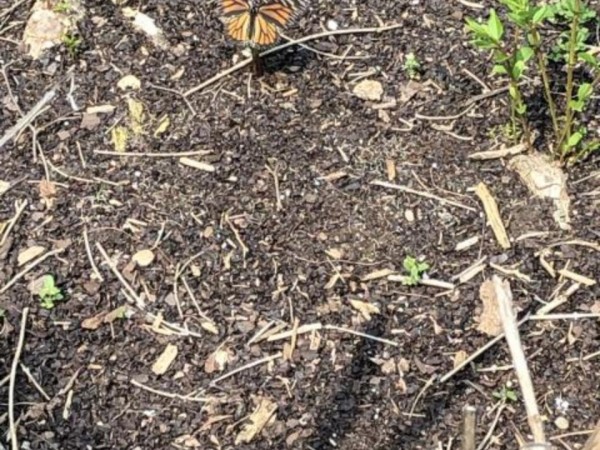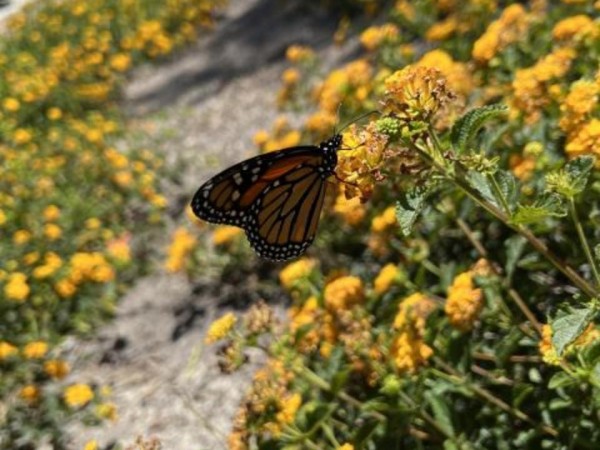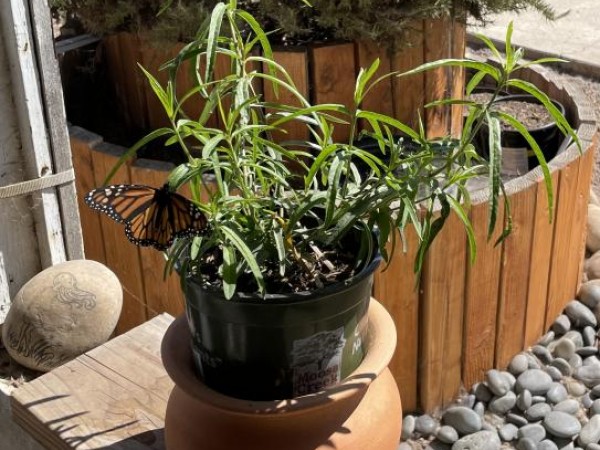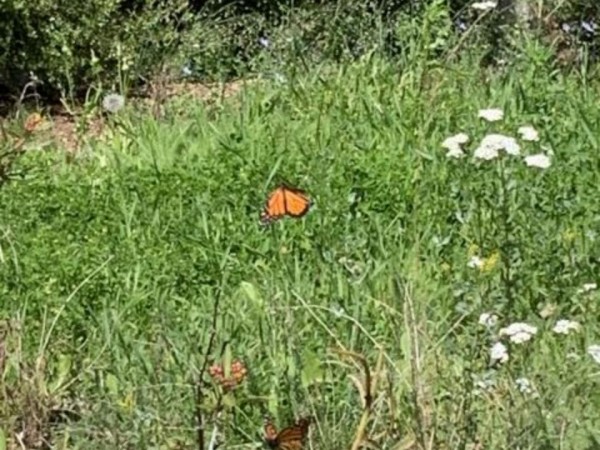Letter from Gail Morris: Western Monarch Spring 2022 Report #8
Published: 05/18/2022
Dear Western Monarch Friends,
Monarchs are slowly entering Utah with a second sighting reported this week as sightings continue to grow in the California coastal regions extending a short distance into the neighboring deserts. All adult sightings with photos show fresh and new monarchs, a harbinger of a new generation.
Western Monarch Sightings
In Utah, Chantel spotted her first monarch of the season at American Fork on May 11. “First monarch I’ve seen in years in my yard! A female laying eggs on my milkweed.”
Jeanne in Riverside, California, saw her first monarch of the season on May 11. “Saw a female monarch this afternoon, laying eggs on the milkweed sprouts in my backyard.”
Emoly sighted the first monarch of the season on May 12 in Aliso Viejo, California. “Male.”
Jennifer in La Quinta, California, saw two monarchs on May 12. “Adults seen almost daily. I have several chrysalis as well.”
Valerie in San Diego, California, also saw her first monarch of the season on May 13. “It landed on my brand new milkweed plant!!!”
Joyce in Mountain View, California, reported 28 monarchs on May 14! “Today we spotted 28 Monarch butterflies at Google. It was warm, calm and 82 degrees. All of the Monarchs looked bright and young. They were flying, nectaring and mating.”
Uneven Progress
The maps of monarch progress this Spring show uneven northward movement between the eastern and western range of monarchs. Milkweed appears to be up and waiting for the monarchs across the country. Why the difference? Could temperatures and other weather-related conditions be playing a role? Could mountain ranges slow their progress in the West? Drought? The California population is booming, thanks to the many reports filed this week that helps everyone see first as well as additional sightings. Be sure to take a few minutes to look at the different Journey North report maps to see the migration unfurl in real time this week. Let’s see if monarchs continue to expand their range more in Utah, Nevada, Oregon or the higher elevations of Arizona.
Send in your reports!
If you are lucky enough to see monarchs on their Spring Migration, be sure to report them to Journey North—whether they are adults or eggs or larvae. Provide as much information as you can such as weather conditions (it’s okay to estimate). Your detailed description of what you see can include, but is not limited to, the monarch’s gender and activity and, if known, the type of flowers if they are nectaring. If you can, observe the condition of the wings—fresh and new or worn and tattered or something in between. This helps us learn more about monarch age and survival. We realize it isn’t always possible, but please take a photo if you can. Thanks so much for your help.
Gail Morris is the Coordinator of the Southwest Monarch Study (www.swmonarchs.org), a Monarch Watch Conservation Specialist, and the Vice President of the Monarch Butterfly Fund, the Central Arizona Butterfly Association and the Western Monarch Advocates. The Western Monarch Population News is based on comments provided to Gail Morris. We hope to increase the number of sightings and therefore photos and comments entered into Journey North. We rely on the volunteers who communicate regularly with Gail and who agree to participate in our effort to increase awareness of the population of western Monarchs. You can reach her at gail@swmonarchs.org





